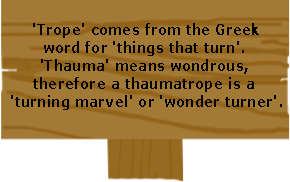Is persistence of vision important in animation?

Persistence of vision describes the fact that our eyes 'remember' the image they have just seen briefly after it has gone. It was thought that in animation this joins together with the next image to give the impression of seamless movement from one image to the next when it is changed quickly enough. An example of this is the 'bird in a cage' which a lot of children make in their early years at school. The two separate pictures of a bird and a cage are rotated on the end of a straw (or on twisted string) which the viewer sees as one image of a bird in the cage. This is known as a thaumatrope.

A set of two pictures shown quickly merge due to the effect of 'Persistence of vision'. The third box demonstrates this, starting slowly and speeding up until the brain sees the two images as one.
This was (and still, incorrectly, is) used to explain how still images are seen to 'move' or become animated. However, it is now understood to be more likely to 'smooth' the change between two images but is not responsible for the sensation of movement. The way in which we perceive flicker depends on many factors including age and fatigue. For more information on 'flicker fusion' see here.*
The reason for our perception of the movement of still images is considerably complicated and is part of the processing in our brain rather than just an independent effect of our eyes. It is suggested that a part of our brain detects both a change in light between neighbouring sensors in our eyes, and the amount of time the change took, to perceive motion occurring. A significant amount of extra processing goes on to do things like remove our own movement from consideration to help us make sense of our own world successfully. However the system can be fooled, which is just as well otherwise we wouldn't be able to enjoy an animation or movie with our popcorn!








